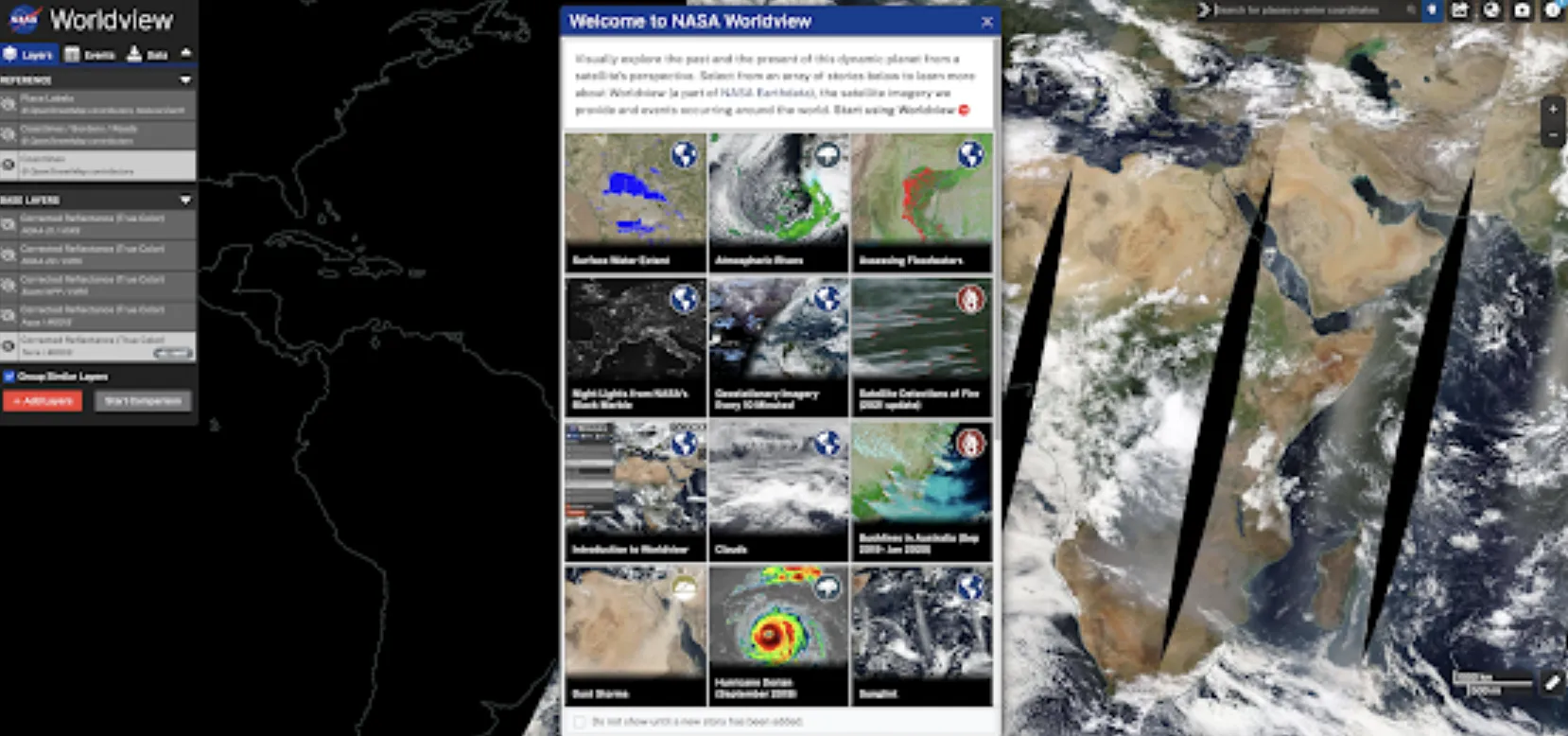October 4, 2024
NASA offers environmental and science journalists a 'cool tool' and free graphics with its 'Worldview' database
By Joseph A. Davis for the Society of Environmental Journalists

NASA's Worldview offers seemingly endless data and free graphics. (NASA Worldview photo)
Part of NASA began with Caltech students blowing up part of their dorm room while experimenting with rockets. From those extraordinary-sounding beginnings, the space agency has combined its data-gathering satellites with analysis powerhouses and offers "unimaginably huge" troves of data, some of which is open to the public and journalists, reports Joseph A. Davis for the Society of Environmental Journalists.
While the sheer vastness of information may seem daunting, don't worry, "there is a system (or a system of systems) for handling it," Davis explains. "It goes by the acronym EOSDIS, for Earth Observing System Data and Information System. . . . . Meanwhile, NASA’s query site, called 'Worldview,' translates some of the most meaningful data into graphic form. You can access the Worldview landing page, which is also the query engine, here."
The Worldview database is a "cool tool" for environmental journalists and their production teams to use. Davis adds, "It’s not simply data; it’s free graphics." That's a huge upside. The downside to Worldview is that it's not easy to use. "Some important parts of it just don’t work. . . . . On the other hand, the number of choices you have about what to look at is very large."
The options are virtually endless and the data and graphics are "right in the strike zone of stories environmental journalists often cover," Davis writes. "You can request many different time spans, you can compare views from one time period against another, and you can choose particular places, zooming in and out almost at will. You can find out about wildfires, floods, dust storms, smoke plumes, drought, vegetation cover, human built-up areas and settlement areas, and even dams. And more."
Worldview also covers climate. Davis explains, "It tells you many details about albedo, sea-ice cover, surface temperature, etc."